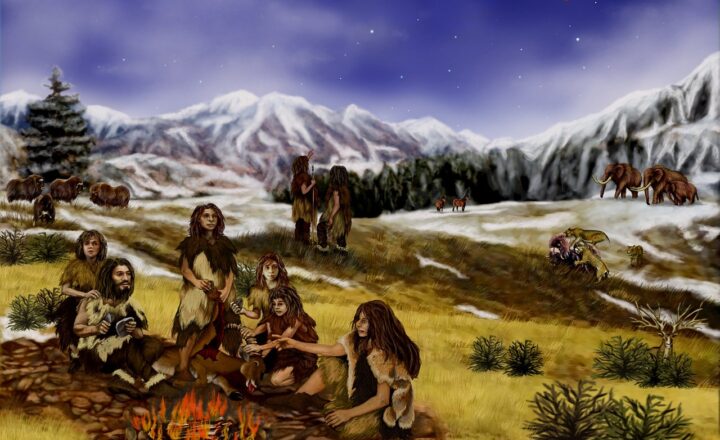How Fossil Evidence Tells the Story of Earth’s Earliest River Ecosystems
November 15, 2024

Fossils are the remnants of life that existed long before humans walked the Earth, offering a tantalizing glimpse into the past. They unveil the hidden tales of evolution, extinction, and the interactions between species and their environment. One of the most fascinating aspects of paleontology is the study of fossil evidence related to ancient river ecosystems. These ancient habitats not only shaped the biodiversity of their time but also laid the groundwork for the complex ecosystems we see today. This article explores how fossils tell the story of Earth’s earliest river ecosystems, their evolution, the species that inhabited them, and the implications of these findings for understanding our planet’s history.
1. The Importance of River Ecosystems
Rivers have always been vital to the Earth’s ecology. They provide fresh water, habitats for a multitude of organisms, and contribute to the nutrient cycles essential for life. Ancient river systems were no different; they were complex ecosystems teeming with diverse flora and fauna. These systems supported early fish, amphibians, reptiles, and various invertebrates.
The fossil record helps us piece together the conditions of these river ecosystems and the organisms that thrived within them. By studying the sediments, bone structures, and plant materials from fossilized remains, paleontologists can reconstruct ancient landscapes and gain insights into climatic conditions, habitat types, and food relationships.
2. Discovering Ancient Rivers: Fossil Evidence from Different Periods
Fossils are found in sedimentary rocks, which form in layers as sediments accumulate over time. For ancient river ecosystems, fossils can include everything from fish bones to footprints left by dinosaurs. By analyzing these fossils from various geological periods, scientists can trace the evolution of river ecosystems across time.
**Devonian Period:** The Devonian, often called the “Age of Fishes,” dates from approximately 419 to 359 million years ago. This period marked significant diversification in aquatic life. Fossils from this era, including the armored placoderm fish, suggest the existence of complex river systems where early vertebrates adapted to fresh water.
**Carboniferous Period:** In the Carboniferous period, lasting from 359 to 299 million years ago, swampy river systems flourished, hosting dense forests and diverse amphibians. Fossils of these ancient rivers show evidence of both aquatic and terrestrial life interacting in unique ways. The presence of early amphibians in the fossil record indicates successful adaptations to both water and land.
**Mesozoic Era:** This era, which includes the Triassic, Jurassic, and Cretaceous periods, saw the rise of dinosaurs and more modern river ecosystems. Fossils like those of the river-dwelling crocodilians and ancient turtles illustrate the complexity of food webs that were emerging as dinosaurs roamed the land.
3. Analyzing Fossilized Sediments to Reconstruct Ecosystems
Sediment analysis is a key tool in paleontology for reconstructing ancient environments. When examining fossil sites, researchers look at the composition, texture, and arrangement of sediments to interpret the past. For river ecosystems, various sedimentary structures can reveal valuable information about water flow, habitat types, and climatic conditions.
**Sedimentary Characteristics:** Features such as cross-bedding or ripple marks indicate the flow direction of ancient rivers. The presence of fine-grained sediments suggests slower water flow, which is ideal for the formation of floodplains and wetlands.
**Paleoecology:** By assessing which fossils are found together, scientists can infer trophic interactions. The presence of predator-prey relationships, for example, suggests a balanced ecosystem where carnivores thrived alongside herbivorous species.
4. Significant Fossil Discoveries from Ancient River Ecosystems
Numerous fossil sites globally have provided fascinating insights into ancient river ecosystems. Some notable discoveries include:
**Kaskaskia Sea, USA:** Fossils found in this region include a diverse array of fish and amphibian remnants. They offer clues about the shift from marine to freshwater ecosystems during the late Paleozoic era.
**Green River Formation, USA:** Renowned for its fossil fish, the Green River Formation provides remarkable insights into ancient lake and river systems during the Eocene epoch—about 56 to 34 million years ago. Fossils of various fish species, insects, and plants illustrate a rich ecosystem.
**Brazilian Cretaceous Rivers:** Well-preserved dinosaur fossils have been found, alongside ancient flora, indicating how these ecosystems supported large terrestrial animals while also hosting diverse aquatic species.
**China’s Liaoning Province:** Here, well-preserved fossils of fish, amphibians, and even the earliest dinosaurs have been uncovered, showcasing the transition between aquatic and terrestrial life in ancient river systems.
5. Implications for Understanding Modern Ecosystems
The study of ancient river ecosystems not only expands our understanding of the past but also serves as a crucial reminder of the fragility of current freshwater ecosystems. Analyzing how species adapted to changing environments can provide valuable lessons for modern conservation efforts.
**Ecosystem Resilience:** Studying how ancient ecosystems responded to climate shifts, river course changes, and species extinctions can inform present-day ecological management strategies.
**Biodiversity Preservation:** Recognizing the interconnectedness of aquatic and terrestrial life within river systems highlights the importance of protecting freshwater habitats against pollution, climate change, and habitat destruction.
Conclusion
Fossil evidence paints a vivid picture of Earth’s earliest river ecosystems, showcasing the complexity and diversity of life that existed long ago. Through meticulous research and analysis of these remains, scientists can unravel the intricate stories of ancient organisms and the environments they inhabited.
As we learn from the past, it is vital to apply this knowledge to help preserve our modern rivers, ensuring the continued survival of diverse species and the health of ecosystems that are crucial for life on Earth. The stories told by fossil evidence continue to resonate, reminding us of the delicate balance maintained within our planet’s ecosystems and the importance of safeguarding them for generations to come.







